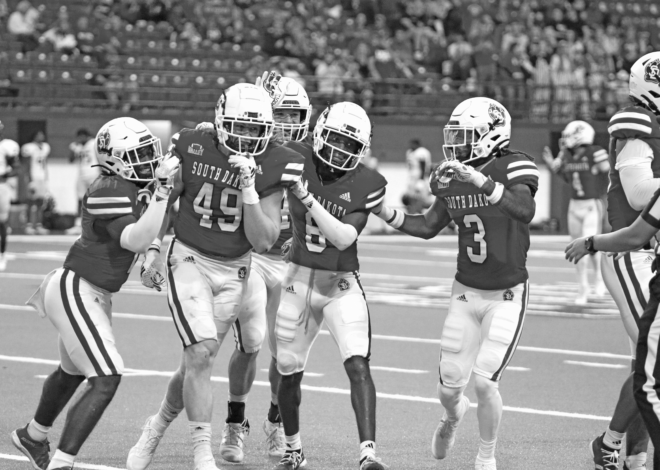Discrepancy found between USD men’s and women’s coaching salaries
According to data retrieved from the University of South Dakota’s athletic financial report for the 2010-11 fiscal year, a noticeable discrepancy between the compensation of head coaches for men’s athletics and head coaches for women’s athletics has created a gap of more than $16,000 in yearly pay.
On average, USD men’s head coaches earn a yearly salary of $60,383 while women’s head coaches draw in $44,228, a difference of $16,155.
USD athletic director David Sayler said there are a number of factors that tie into the difference in compensation between the two groups.
“Our salaries are very well in line,” Sayler said. “But you will always have situations when the sports that make revenue have coaches that earn more and send those percentages out of whack.”
On the national average, men’s head coaches earn $109,126 while women’s head coaches make $71,464; a discrepancy of $37,662.
The USD basketball team stands alone as the only athletic organizations that turned a profit during 2010-11, reeling in a net revenue of $81,966.
USD women’s basketball head coach Ryun Williams said an even balance between men’s and women’s athletics is nothing he expected upon his arrival in 2008.
“The women’s game (at USD) is growing,” Williams said. “But I don’t think it will ever be even with men’s athletics. With that being said, administration does a great job of taking care of the coaches here as far as salaries go. I would never have dreamed I would be making this much a year while coaching women’s basketball.”
This deficit in salaries does not involve only head coaches; the average USD men’s assistant coach earns a salary of $30,298 compared to just $15,638 for women’s assistant coaches.
Discrepancies between men’s and women’s coach salaries is no issue for fellow South Dakota Division-I school South Dakota State. In 2010-11, SDSU men’s coaches earned an average of $55,412 with women’s coaches earned just $2,271 less at $53,141.
USD vice president of finance Sheila Gestring noted on the various possible reasonings behind the unbalanced coaching wages.
“The career longevity of each coach is definitely something to look at when viewing these numbers,” Gestring said. “A coach who has many years of experience is not going to make the same amount as a coach with very few years of experience. This idea, along with taking into account revenue sports, can certainly give insight as to why these numbers seem so far off.”
As USD finishes its final transitional year into Division-I, both Sayler and Gestring said harmonizing salaries will be a priority the university must address during the upcoming fiscal year.
“University salaries were frozen for quite some time and we are just now getting back to working on raising those as we finish up our transition into D-I,” Sayler said. “We would like to do that but it depends on how much money we can generate.”
Reach reporter Austin Ashlock at [email protected]
Data collected from the U.S. Department of Education shows the University of South Dakota spent over $8.5 million on athletics during the 2010-11 school year.

